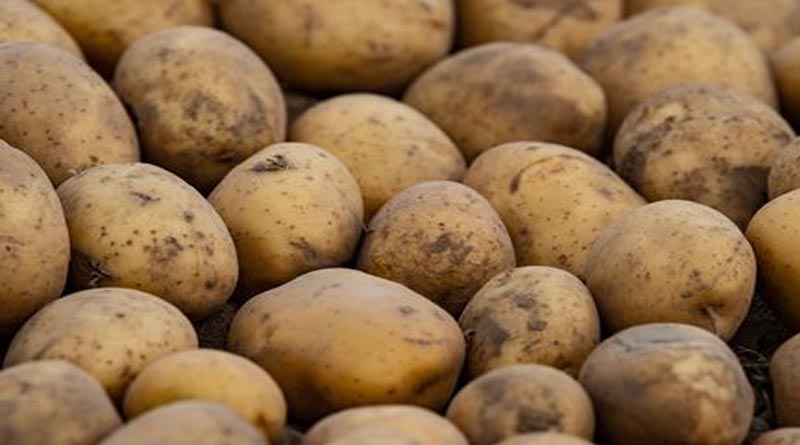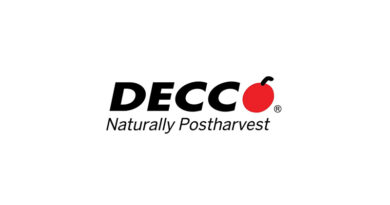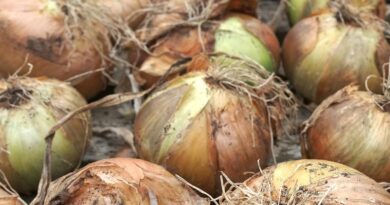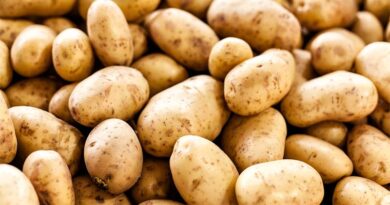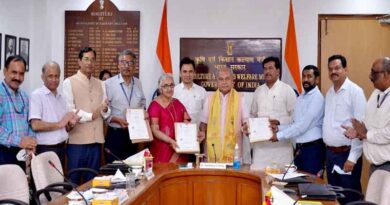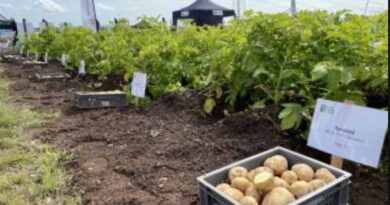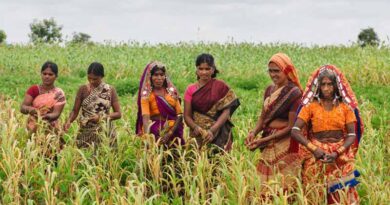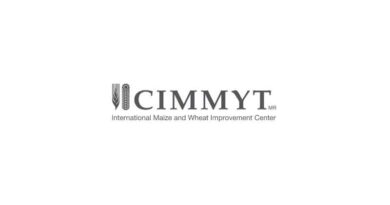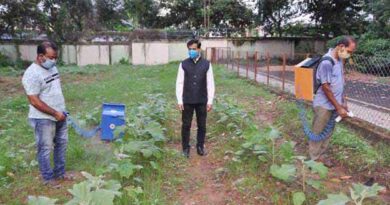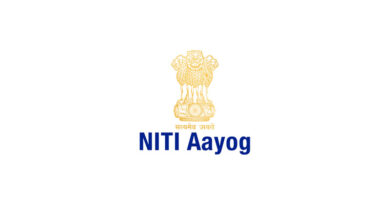Trends in Potato Technologya
Dr. Rolf Peters, Visselhövede
06 November 2023, US: (DLG). Potato growing has required a particularly high degree of flexibility from farmers in this year’s growing season due to the intensive change in weather conditions. Together with the emerging changes in the political framework conditions, this results in new challenges that also need to be tackled with the help of adapted technology.
Storage
In the context of potato production, potato storage is particularly affected by the considerable increase in energy costs, as in many farms the existing outside air ventilation system has been supplemented with mechanical cooling. This enables quality-oriented storage to be ensured – even at higher climate-related temperatures. In new buildings, the insulation thicknesses of the outer shell are therefore being considerably increased, while in existing warehouses the aim is to minimise thermal bridges as well as any uncontrolled ingress of air. The replacement of the old AC fans with more efficient EC models, which can then also feature stepless speed adjustment, is also being supported.
In the case of new warehouses, a stronger subdivision into smaller storage rooms can be observed at the same time. These can be filled more quickly and then managed more specifically in terms of temperature than a large hall. An increase in efficiency can also be achieved in crate storage with the transition to forced ventilation systems, which can ensure faster drying and cooling thanks to the much larger contact surface of air and potatoes they off. In addition to the individual support of quality-oriented warehouse management, the newer control processors often also offer the ability to optimise energy management. This is achieved by integrating the greatest possible use of self-generated regenerative energy or temperature management while taking into account the weather expected in the next few days.
Storage and processing
As the harvesting capacity continues to increase, so do the demands on the storage line to maintain the necessary buffer function within the harvesting chain. In addition to the various roller units for soil separation, there is also increasing interest in electronic and pneumatic admixture separation systems, as the farms are often unable to find harvesting personnel for the harvesters. However, it must be taken into account that the later the stones or clods are sorted out in the process chain, the greater the risk of the potatoes being damaged. For direct overloading and cleaning at the edge of the field or from the field itself, both mobile collection equipment and transfer wagons are used, some of which can also be equipped with electronic or pneumatic separating devices.
In the processing of storage potatoes, opto-electronic sorting and sorting systems are increasingly finding their way into agricultural practice, the workforce available in this area is also hardly sufficient. In addition to a continuously developing detection technology, the operability of the systems has also improved. While the compact systems with vertical crop flow can only divide into two to three quality or sorting classes, further subdivisions are possible with the horizontally operating systems. However, this requires a correspondingly larger floor space, which is not always available in existing lines.
Ordering
The influence of climate change is particularly evident in the layout of the potato fields. The most effective way of reducing the intensity of dry and hot spells is to quickly close the canopy of leaves in the potato crop. For this purpose, both leafier types and closer row spacing are helpful, while larger ridges and row widths are increasingly used, however, due to the higher yield or cultivation in separated beds. In addition, there are political efforts to increase soil protection, for example by covering the soil as much as possible and reducing the intensity of cultivation.
With the combined units of soil tillage, placement and mounding tools, separate adjustment or use of the units therefore makes it easier to adapt to changing operating conditions. In addition, tools to prevent water erosion in furrows will also become increasingly important in supposedly flat regions, as they keep the water on the surface longer, making it available to the plants. In this context, the stability of the ridges and their surface condition is added to support the infiltration of precipitation into the body of the ridge and to prevent slippage of the ridge faces.
Care and crop protection
The rainy weather from mid-July to mid-August this year has shown that late blight continues to be a very destructive disease in potato farming, which must be intensively combated in such critical phases. Against the background of a planned or already agreed significant reduction in the use of crop protection products, this means that savings opportunities are likely to be sought primarily in the other areas of potato production. In weed control, chemical herbicides can be supplemented with mechanical measures or possibly replaced altogether. However, technical development in the field of mechanical potato maintenance has not yet taken on the momentum that can be observed in other crops, such as sugar beet. This is partly due to the ridge culture, as the cultivation of ridge faces and crests involves differing challenges. For example, plant spacing in the row has a relatively large spread width depending on the planter used, and the multi-stem growth of the potatoes also places significantly higher demands on tool guidance. Therefore, the combination of chemical strip treatment in the ridge crest area and mechanical ridge face treatment could be a sensible solution here.
Another challenge in mechanical maintenance is to increase the area output through higher driving speeds and larger working widths. The latter would be favoured by the use of six or eight-row planters, which are slowly finding their way into practice as solutions with a central storage bunker and lateral fold-out planter units. In addition, technical solutions are still lacking to level the transverse ridges built up in the furrows before or during the maintenance passes in such a way that driving over them with a tractor and precise machine control are possible again.
Foliage reduction
The combination of haulm topping followed by chemical desiccation, which is now being used again on a larger number of farms, can also reduce the use of chemical crop protection products. However, an essential requirement from practice is an increase in the working width, which, unfortunately, is countered by the relatively high machine weight of the classic haulm toppers.
For completely chemical-free haulm reduction processes, haulm plucking machines are available on the one hand, with a tool range that now also includes horizontally rotating rubber belts and new rotating rubber discs in addition to the familiar plucking balloons. In thermal scorchers, efficiency has been improved with the help of supporting air blowers, but the CO2 footprint of the process remains comparatively high due to the combustion of gas. The working width of the machines for electric haulm cultivation has already been increased to nine or twelve metres. This was made possible by further optimised current applicators as well as the prior spraying of the plants with a conductive liquid, which should ensure an improved and, above all, more constant conductivity of the potato foliage over the entire area.
Harvest
Desiccated potato haulm has also become an increasing problem in the potato harvest in recent years, as it is no longer removed as effectively by the current haulm separation equipment of the harvesters due to a presumably altered consistency. A large amount of haulm ties up the work of the harvesters and can also lead to obstructions in the processing lines when the potatoes are marketed later. Air-assisted separators in the harvesters could offer a solution here early in the process, while counter-rotating separators, also in the processing area, are often associated with higher mechanical stress on the tubers.
As the purely mechanical, thermal and electrical weed reduction methods lack a permanent effect, a stronger re-weeding of the ridges is to be expected until harvest, especially if the planned clearing date cannot be realised due to weather or performance. This is further intensified by a tendency towards a higher basic load of exclusively mechanically maintained crops, so that here as well, new demands are placed on the haulm separation tools of the harvesting machines.
A bottleneck in harvesting performance is often the active admixture separating devices, such as rotating scrapers or brush belts, as a satisfactory working performance requires a crop flow that is as evenly distributed as possible and a throughput that is not too high. The growing variability of the admixtures on the individual fields with the increase in the area under potato cultivation on farms makes it difficult to select the “right” separating device for the harvester, so that the farms or contractors demand greater flexibility from the manufacturers. Be it through a more practical implementation of the modular design with significantly shorter conversion times or the tool-free changeover between different units in one machine.
As in other arable crops, digitalisation and data management continue to establish themselves in potato cultivation. Examples of this are site-specific application maps for fertilisers and crop protection products or the use of chemical siccatives based on the degree of maturity. With practicable yield mapping of the potato harvest, which takes into account not only the mass yield but also the size composition of the crop as well as the respective proportion of admixture, a gap could now be closed to enable effective control of the implemented crop management measures. At the same time, the machine settings in the area of the separators can be optimised and the risk of damage to the potatoes reduced. The size composition of the individual lots, which is already known at the time of harvest, also offers advantages for further marketing.
Also Read: CGIAR capacity development hub at UM6P in Morocco
(For Latest Agriculture News & Updates, follow Krishak Jagat on Google News)

